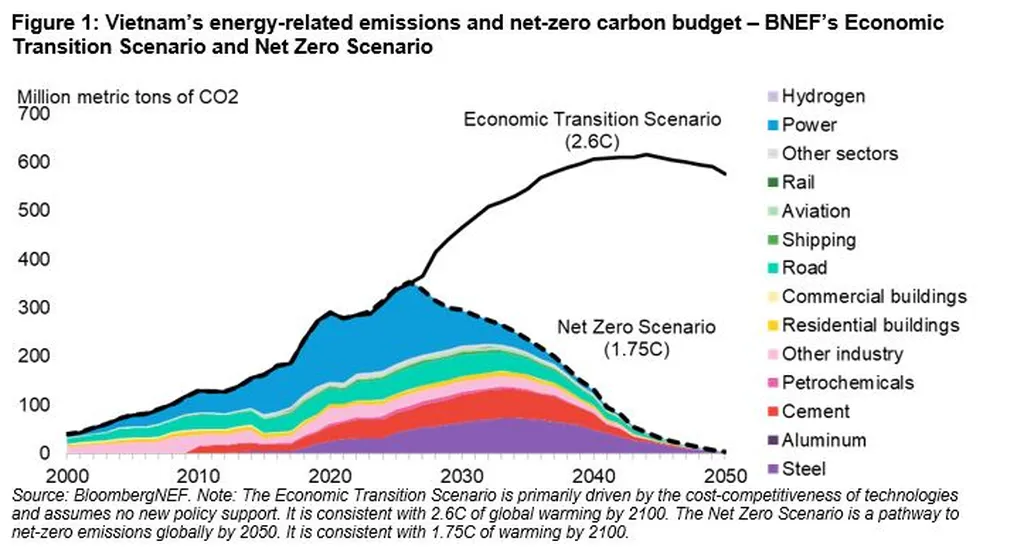In a significant stride toward Vietnam’s Net Zero ambitions, a recent study published in the journal “AIMS Energy” offers a roadmap for the country’s power sector transformation. Led by Van Duong Nguyen from the Institute of Energy, Vietnam, the research explores optimal pathways for generation expansion, balancing cost, emissions, and technological feasibility.
Vietnam has pledged to achieve Net Zero emissions by 2050, with the power sector playing a pivotal role in this transition. The study, titled “Generation expansion planning toward Net Zero target considering co-firing green fuel, CCUS installation and early decommissioning in thermal power plants: A case study of Vietnam,” investigates how to align the Power Development Plan Ⅷ (PDP Ⅷ) with this ambitious goal.
The research compares two planning approaches across three scenarios. The first approach directly constrains CO2 emissions (Scenario S3), while the second predefines the timeline and ratios for co-firing thermal plants with green fuels (Scenarios S1 and S2). Scenario S1 adheres closely to PDP Ⅷ’s planned thermal commitments and solar limits, while Scenario S2 offers flexibility by committing only plants under construction and allowing higher solar potential.
“Our findings indicate that Scenario S3 yields the lowest total system cost while meeting the Net Zero target,” Nguyen explains. This optimal strategy involves early decommissioning of thermal plants and prioritizing renewable energy and storage expansion over thermal fuel conversion. Notably, nuclear power and Carbon Capture, Utilization and Storage (CCUS) technology were not included in this optimal pathway.
By 2050, under Scenario S3, renewables are projected to contribute to 95% of energy generation, with thermal power dropping to just 5%. CO2 emissions peak in 2030 in all scenarios, earlier than defined by PDP Ⅷ. The study underscores the critical need for energy storage, flexible generation, and significant high-voltage direct current transmission capacity from South Central to North Vietnam after 2030.
The research also highlights the importance of fully utilizing ground-mounted solar potential, suggesting a need for expanded land allocation if available. “These findings emphasize the need to prioritize renewable energy, storage, and transmission investment for an efficient Net Zero transition,” Nguyen notes.
The study’s implications for the energy sector are profound. It suggests that early decommissioning of thermal plants and a focus on renewables and storage could be more cost-effective than retrofitting existing plants with green fuels or CCUS technology. This could reshape investment strategies and policy frameworks, steering stakeholders towards more sustainable and economically viable solutions.
As Vietnam and other nations grapple with the complexities of energy transition, this research provides valuable insights into the pathways that could lead to a Net Zero future. Published in the journal “AIMS Energy,” the study serves as a beacon for policymakers, investors, and energy professionals navigating the intricate landscape of power sector transformation.

